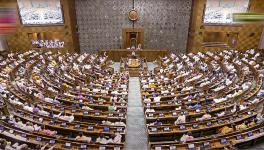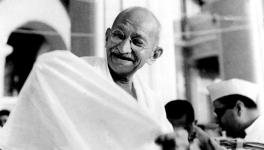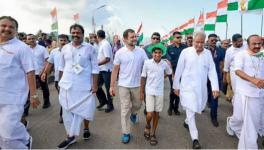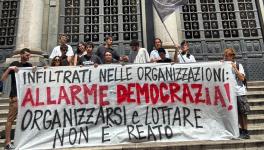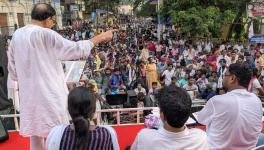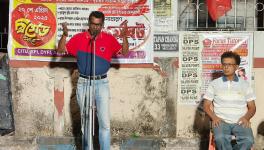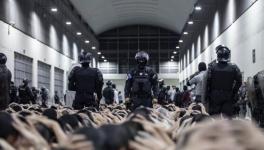Campus Spring Changed my View on ‘Apolitical’ Students
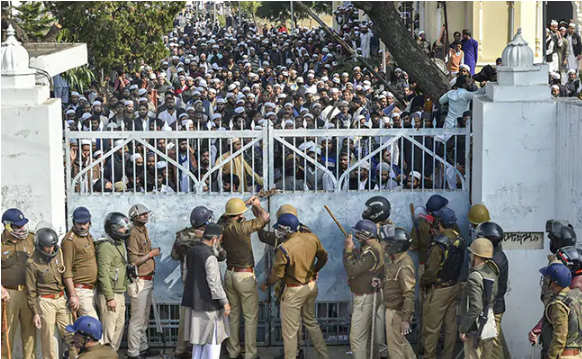
Aligarh Muslim University is the country’s largest residential university. I have spent almost thirty years here as a student and teacher. In recent years, I had turned increasingly cynical and started assuming that Millennial students and the youth are essentially hedonists—a depoliticised group of consumerists who do not think about the disadvantaged groups or the world around them. I found that a few were interested in student politics, but they seemed to me largely self-serving—more keen to build a career in power-politics but not fully committed to the emancipatory ideals of politics.
Not just me, this impression had slowly gained ground among many teachers that a large chunk of students care about little more than securing a professional degree or diploma and finding a job—preferably through campus placement. In and outside the classrooms we sensed this was true for male students in particular.
At the same time, we teachers have witnessed another trend: those students who do not clear the entrance exams for low-cost public-funded institutions head for high-cost private institutions. For students who belong to the relatively weaker economic strata, education loans from public sector banks were the only recourse. Education, thus, pressed families hard and made students desperate to start work quickly and repay their loans.
Education, thus, became an economic investment, expected to yield profits soon after obtaining a degree. This scenario unfolded in particular in the liberalised economy of the nineties, which threw Indian students into a globalised world order they had no resources to compete in. The depoliticisation of students was sold to the public as just a normal marker of the ‘end of ideology’. Thus, political ideas were shunned and individuals were put in the service of the marketplace.
But the events of December 2019, I confess, proved all of us cynics wrong—and our students right. Not only did they come out on the streets in numbers to protest repeatedly against the amended citizenship act, they saw it for the assault on the Constitution that it is. The placards they carried displayed their creativity and their skills with rhetoric and their writings on social media testify to how well-read they are—more than we gave them credit for, though many of them could still aspire for more on that front.
Their insights into the present situation, their brilliant wit and capacity to pick up protest poems shows the breath of their knowledge, interpretative skill and their commitment to constitutional values. I, for one, am impressed by how they do not seem to be bereft of the contents of a liberal education in the arts despite their hunger for diplomas and degrees in the sciences and technical courses. How wrong have we teachers been in assessing our students.
It is a fact that in select campuses such as Jamia Millia Islamia (Jamia) and AMU, students have been agitating over local as well as wider issues—such as over the demand to have an elected union and other demands. Similarly, JNU’s Left union has been facing challenges from the right wing outfits. For a moment, consider these the exceptions. Even then India’s ongoing Campus Spring does not appear limited in breadth and scope.
In fact, it has spread to elite and academically acclaimed institutions: the IITs, the IIMs, and even Delhi’s St Stephen’s College, which does not participate in the Delhi University Students’ Union elections and which saw student “romanticism” with the revolutionary Left for only a few years during the late sixties and early seventies, has stepped out against the recent violence at JNU. We teachers must study these campus protests deeply. After all, even private universities such as Ahmedabad’s Nirma University have witnessed student protest, though it was suppressed.
How this Transformation Took Place
In the effort to manufacture support for a liberalised-privatised-globalised or LPG economy, students were made to believe that the new economic order will keep on offering them more jobs and better opportunities. This is how consent for selling off Public Sector Undertakings (PSUs) was manufactured—by widely propagating the false idea of government ‘inefficiency’ and corporate ‘efficiency’. This idea was believed for many years by most students and their families. But by now they have sampled the private sector; seen how it over-works and under-pays and how, in the name of cost-cutting, employers keep firms under-staffed.
With the economy in tailspin over the last few years—after the global financial crisis of 2008 and the demonetisation fiasco of 2016—students have seen through the smokescreen of promises made to them on the economic front after the liberalisation of the economy. They have seen their peers and seniors became underpaid and/or underemployed before their eyes, and they are witness to middle class students taking to working-class jobs in large numbers to stave off unemployment. Then, the failed promises of the demonetisation of November 2016 has led India down the path of highest-ever unemployment in 45 years.
This unemployment scenario created by cruel downsizing by the private firms, the corporate sector and multinational employers also wreaked havoc on them. This youth unemployment was much more painful for those who obtained their education from high-cost institutes. The rush of students to obtain degrees/diplomas in technology, management, mass communication and so on has left them unemployed but with loans and no prospects.
In recent years, a good number of applicants in competitive recruitment tests for government jobs (in lower grades, and also in the public sectors including the railways), began to come from the IITs, NITs and other reputed premier institutions. One can imagine how they received the news of a fairly large number of PSUs being sold off soon. The fact that profitable PSUs are also on the chopping block only makes matters worse.
The closure of a large number of engineering and management institutes testifies to the stark unemployment scenario. Students have seen non-performing assets or NPAs of public sector banks grow, thanks to hefty defaults by the so-called ‘job-creators’. An even bigger chunk of capital has been swindled by a few big capitalists.
It is the high cost of education that prevents students of professional courses, particularly in private institutions, avoid political agitations. The threat of being expelled for participating in protests further raises the cost of education, while also delaying chances at employment. They, therefore do not indulge in protests and agitations; it is unaffordable for them.
The scenario has worsened in recent decades. In the early years of the last decade, students had invested in a fight against corruption. They had harboured the hope that jumping into such movements will mitigate unemployment and create the necessary public expenditure that would raise living standards in the country. Then Narendra Modi, through his oratory and demagoguery, made the youth and their parents believe in his promise of ‘achhe din’—good days. The real or imagined conservatism of Muslims was shown to be obstacles to their economic progress, and a spate of communalism passed over the country.
My friend Nadim Asrar, who works with Al Jazeera in Doha puts it aptly: ‘development is the new communalism’. ‘Terrorism’ is hyphenated with everything harking of Muslims or Islam, which helped Modi’s rise in 2014. In 2019 people gave his government another chance after the national security question was amplified after the Pulwama attack. After re-election, students and the unemployed youth were asked to support muscular nationalism and majoritarianism.
Finally, after the CAA in Assam (which also made lakhs of Hindus suffer) a large number of students and the youth saw that this regime is capable only of creating religious polarisation. They are gradually realising that the National Register of Indian Citizens or NRIC is merely a tool to deflect and divert attention from economic issues. Of those who are protesting, one can be sure, their patience has given way.
The ongoing student agitation is a bid to get the government to redefine its priorities. In the late 1960s, the desperate economic scenario had pushed students out of campuses to join hands with peasants. This was a global phenomenon, also reflecting in the May 1968 movement in France. In the 1970s, once again, campuses had become agents of change.
Even the Hong Kong upsurge has its genesis in the Fugitive Offenders Amendment Bill, against which students have risen since November 2019. As I write, the violent campus of the Polytechnic University of Hong Kong is under police siege. In India, we are yet to see if right wing authoritarianism will repress the youth upsurge or embrace the wisdom of the agitating students and address the economic crisis.
The author teaches modern Indian history at Aligarh Muslim University. The views are personal.
Get the latest reports & analysis with people's perspective on Protests, movements & deep analytical videos, discussions of the current affairs in your Telegram app. Subscribe to NewsClick's Telegram channel & get Real-Time updates on stories, as they get published on our website.









